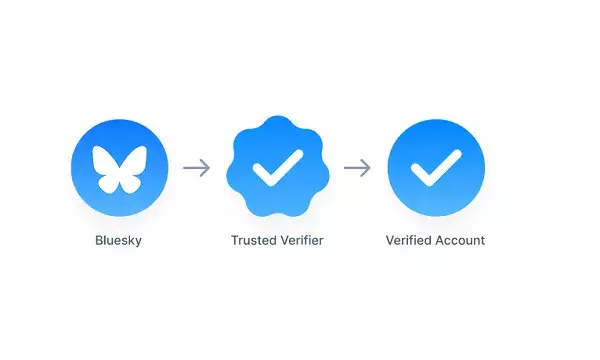Bluesky, the social media endeavor that is gaining traction as a Twitter alternative, is pioneering its own version of in-app verification with a format that speaks to a growing demand for trust and credibility in digital interactions. Launched recently, the verification system aims to differentiate true authority from the ocean of voices flooding the platform. But is this an advancement or a complicated venture set to confuse users and undermine its own credibility?
Understanding Bluesky’s Unique Approach
What sets Bluesky apart in the realm of verification is its distinct visual identity—rounded checkmarks that mirror the platform’s aesthetic design and a star-like symbol reserved for “trusted providers.” This dual system allows for a blend of individual authenticity validation and organizational recognition, paving the way for significant entities like The New York Times to validate their journalists swiftly. The system reduces Bluesky’s workload by permitting these organizations to verify their own staff rather than relying solely on Bluesky’s internal processes.
While the intent behind this strategy is sensible, the implementation raises critical questions. Are organizations equipped to determine which of their members are deserving of verified status? With the risk of biases and internal politics in play, there may be inconsistencies in a user’s perception of credibility within the same entity. Will a journalist’s affiliation alone be enough to impart significance to their content, or will the absence of transparent verification standards dilute trust even further?
The Controversial Notability Definition
At the heart of the verification discussion lies the term “notable,” defined by Bluesky as a critical criterion for securing a checkmark. To qualify, one must demonstrate significance within their geographical or professional arena, utilizing evidence such as media coverage or professional standings. The underlying principle here is fairly straightforward: providing a layer of safety against impersonation for recognized figures. However, the subjective nature of “notability” creates a complex web of criteria that could spur disputes.
The decision on what constitutes “professional recognition” or “credible reference platforms” is notoriously subjective, leading to potentially skewed perceptions of authenticity. Essentially, this verification framework opens a Pandora’s box—who grants authority the power to declare someone notable, and what happens to those who are overlooked? Bluesky’s verification process could inadvertently evolve into a gatekeeping mechanism that privileges some while neglecting others, complicating the app’s mission to foster genuine interactions.
Impacts on User Experience and Trust
For users, the introduction of this verification system presents a mixed bag. On one hand, the potential for added credibility among high-profile users can elevate the quality of discourse on the platform. When users see a verification mark on an account, there’s an instinctive trust that follows; influencers, journalists, and public figures could use Bluesky to share insights without the cloud of uncertainty that often shadows social media. However, the potential pitfalls are equally significant. Users could find themselves grappling with the ambiguity surrounding checkmarks—differentiating between various types of verification may require additional scrutiny that some users simply won’t undertake.
Moreover, Bluesky’s decision to bypass direct communication with applicants could foster disappointment and resentment among users denied verification without feedback and explanation. This could deter potential prominent voices from participating, worried that their credibility remains at the mercy of an opaque system.
Potential Future Challenges
As it stands, Bluesky’s journey toward authenticating user identities appears well-intentioned but markedly problematic. With plans to further refine verification criteria and potentially incorporate identity verification processes, the platform teeters on the brink of a delicate balancing act. The challenge lies not only in creating a trustworthy verification framework but also in maintaining an open dialogue with users about what that verification entails.
Are users ready for such a system? Will they accept the verdicts made by organizations, or will they demand greater individuality in the verification process? These questions bear heavy implications not just for Bluesky, but for the future of online authenticity as a whole. The success or failure of this verification system could very well serve as a litmus test for the evolution of social media platforms and their commitment to fostering trust in user interactions.

